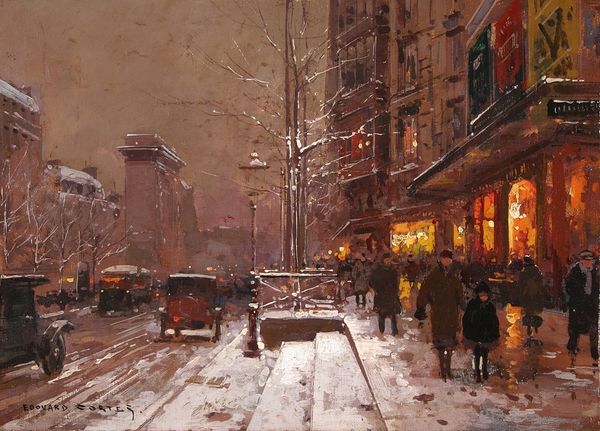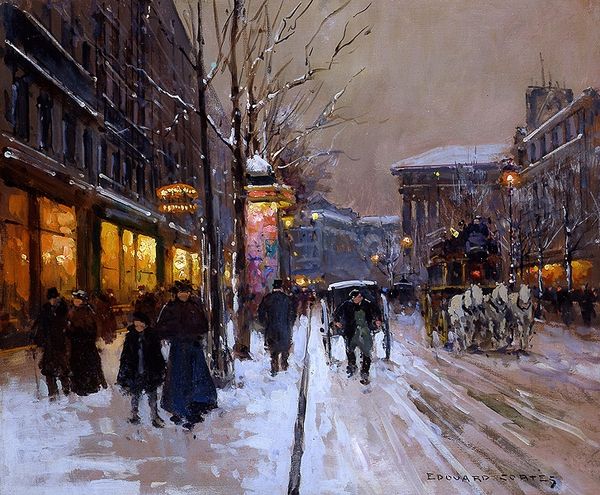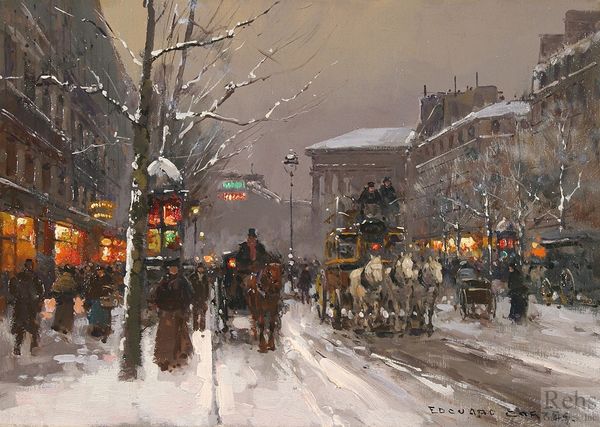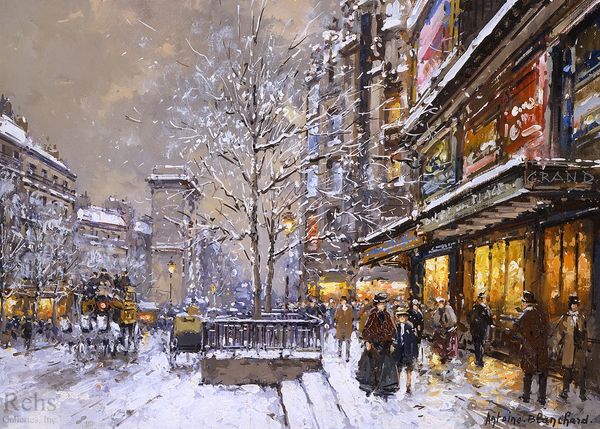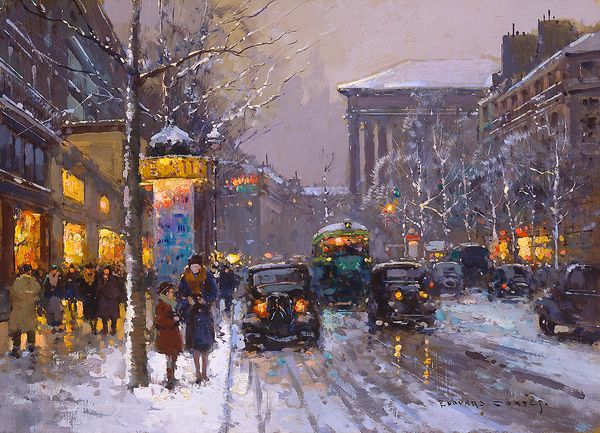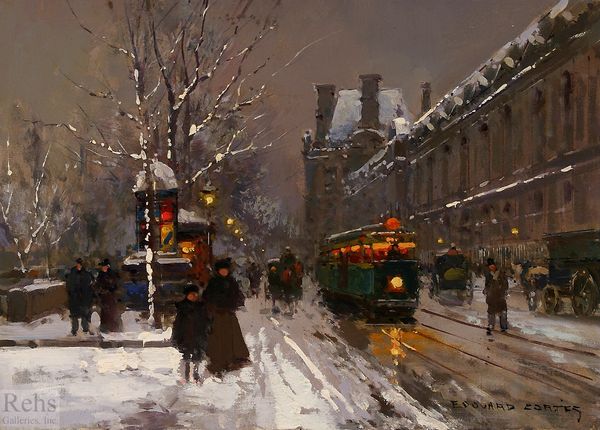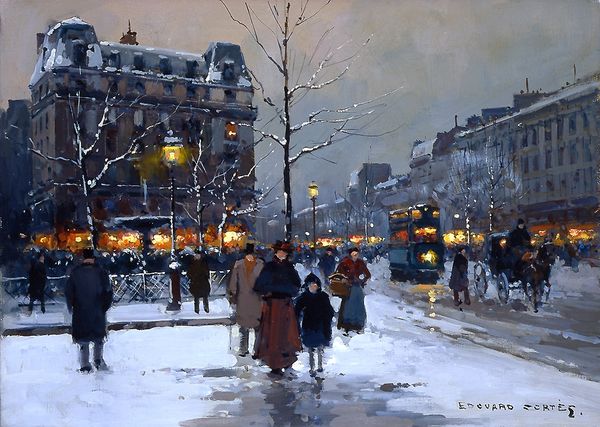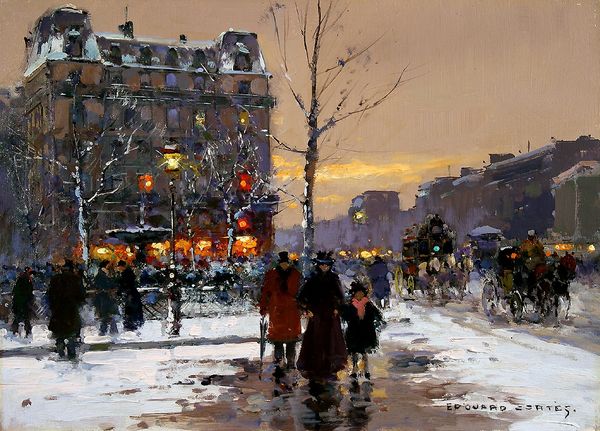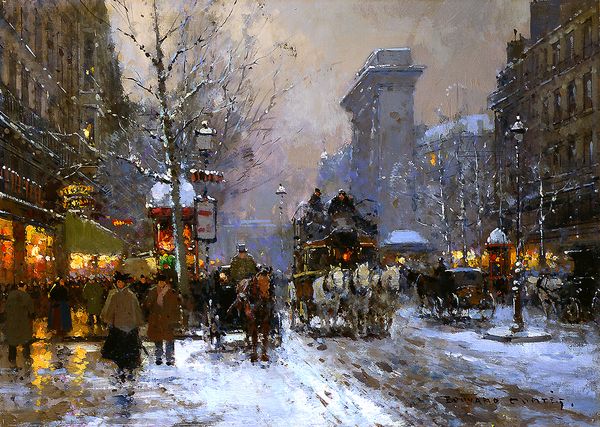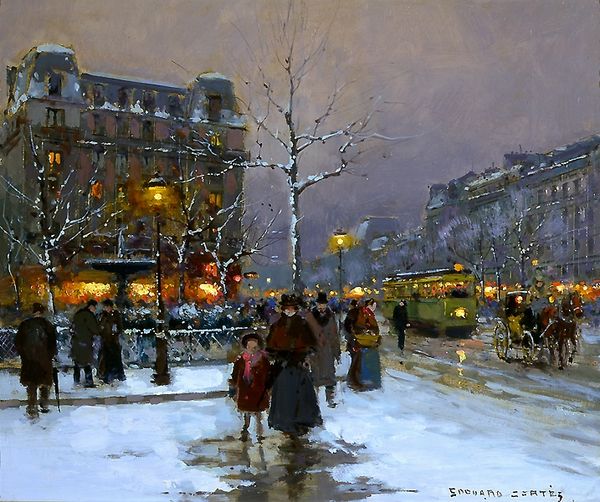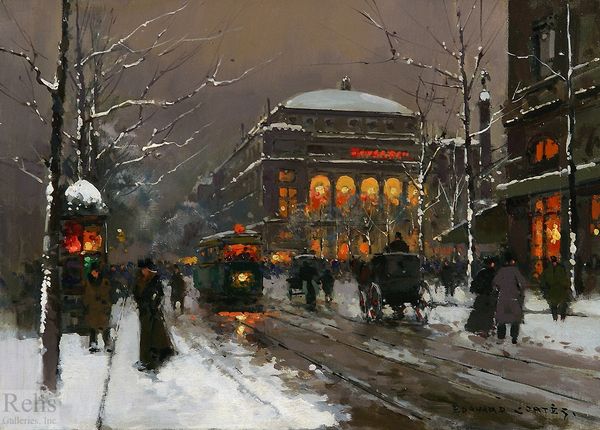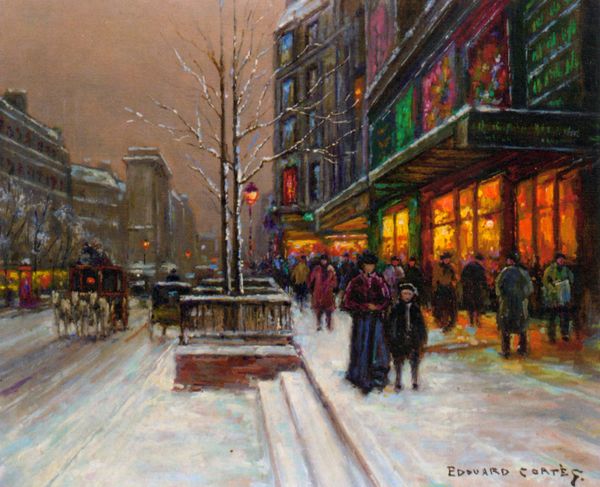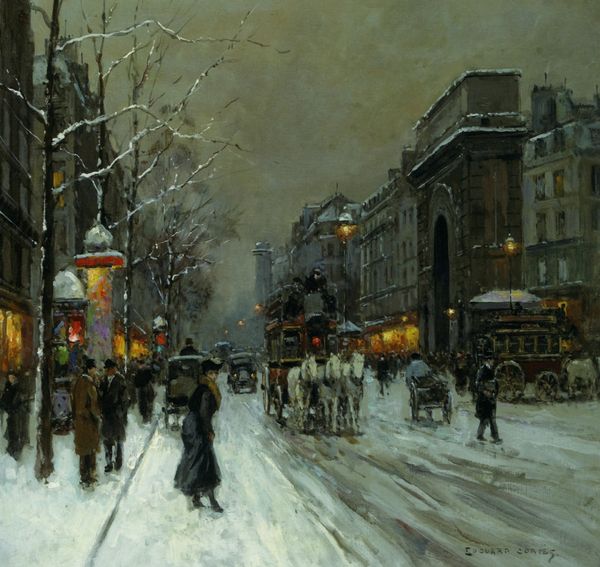
painting, oil-paint
#
urban landscape
#
cityscape
#
painting
#
impressionism
#
oil-paint
#
landscape
#
winter
#
impressionist landscape
#
oil painting
#
romanticism
#
cityscape
#
street
#
building
Copyright: Edouard Cortes,Fair Use
Curator: This painting captures a wintry scene by Édouard Cortès, and it's called "St. Denis, Winter". What are your initial thoughts? Editor: My first impression is the contrast! The dark, muted palette of the snow and sky against the warm, inviting glow of the shop windows. It makes me feel cold, yet also drawn in towards the light and life of the city. Curator: It's interesting you mention the shops because I wonder, looking at those vibrant storefronts, about how these were sites of material exchange for the city's inhabitants, but also powerful signifiers of capitalist expansion at the time. The presence of what appear to be pharmacies with lit up crosses tell another story. Editor: Absolutely. Cortès frequently depicted Parisian street life, showcasing the burgeoning consumer culture. You see that mirrored not just in the shopfronts but also the people themselves, the clothing they wore, likely purchased in those very stores! And even the snow feels deliberate – creating not just a setting but an atmosphere ripe for social interactions around comfort and basic necessity. Curator: Precisely! It is so fascinating to see that in these urban scenes we are also invited to notice class, wealth, and commerce and their entanglement through the perspective that Cortès is presenting through brush strokes in the work, the surface quality of the applied oil-paint as labor too. Editor: That attention to the tangible reminds us this is more than just a pretty picture – it’s a snapshot of a city grappling with progress and all the social dynamics that come with it. Looking at that line of horse-drawn carriages waiting—transport and traffic changed so radically even in Cortès’s lifetime and affected what it meant to be a Parisian. Curator: Indeed, and the muted color palette and broken brushstrokes evoke a certain moodiness. This artistic process contributes to the sense of ephemeral modernity. Editor: Agreed, that balance makes this piece more than just a scene, and the role of galleries and art dealers at the time was crucial to its commercial success and popular appeal. Curator: I am more inclined to consider how a painting can function as historical record through the evidence of artistic process in a modernizing culture. Editor: An interesting perspective. This encounter with Cortès reminds us how context shifts perception, and materiality shifts form to create complex art historical narratives. Curator: Precisely, making material as social, and thus art in relation to that intersection, so pertinent for study!
Comments
No comments
Be the first to comment and join the conversation on the ultimate creative platform.
